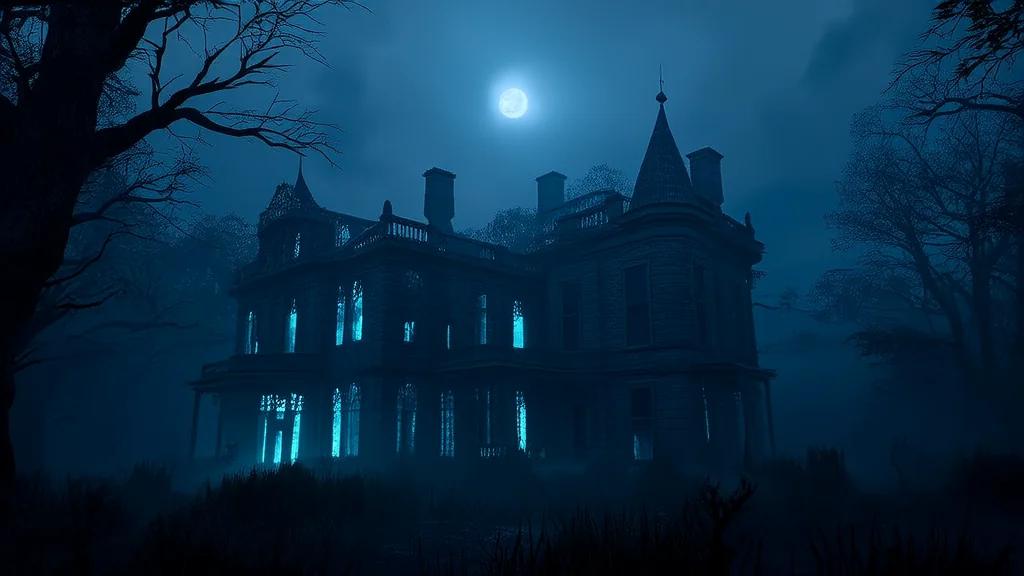🔮 Weird Tales & Urban Legends
The Whispering Walls of Elmsworth's Forgotten Mansion

In the quiet town of Elmsworth, where the fog clung to the ground like a living thing, there stood an old mansion at the edge of the woods. It was known as the Hollow House, though few dared to speak its name aloud. The locals called it "The Whispering Walls," for they claimed that on certain nights, the house would sigh and groan as if something were trapped inside, trying to escape.
No one knew exactly when the mansion was built, but it had been abandoned for decades. The windows were cracked, the roof sagged, and ivy curled around the stone walls like fingers grasping for something unseen. Children in the town were warned not to go near it, not because of danger, but because of the stories—stories of people who had entered and never returned, or those who had come out changed, their eyes hollow, their voices whispering things no one could understand.
One autumn evening, a young woman named Lila, a curious and adventurous soul, decided to explore the Hollow House. She had heard the tales, but she believed them to be just that—tales. Armed with a flashlight and a notebook, she set off through the woods, the air thick with the scent of damp earth and fallen leaves. As she approached the mansion, the wind seemed to die, and the silence pressed against her ears like a heavy curtain.
The front door creaked open without a touch, as if the house had been waiting for her. Inside, the air was cool and smelled faintly of lavender and decay. Dust motes danced in the beam of her flashlight, and the floorboards groaned under her steps. The hallway stretched endlessly, with doors leading to rooms that seemed to shift when she wasn't looking. A portrait hung crookedly on the wall, its subject’s eyes following her every move.
She found a study filled with books, their spines cracked and pages yellowed. Some were written in a language she couldn’t recognize, while others contained notes in a careful, elegant hand. One page caught her eye: *“They are still here, watching. They do not sleep.”* Lila shivered, but pressed on.
In the kitchen, she discovered a table set for a meal, though the food had long since turned to dust. A chair sat empty, as if someone had just left. She touched the wooden surface, and a chill ran up her spine. She didn’t know why, but she felt certain that the house was aware of her presence.
As she climbed the creaking staircase, the lights flickered. Her flashlight dimmed, and she suddenly realized that she was not alone. There was a soft sound, like breathing, coming from the shadows. She turned, but saw nothing. The hallway behind her was dark, and the door at the end of the corridor slowly opened, revealing a room bathed in a pale blue light.
Inside, a mirror stood in the center of the room, its frame ornate and covered in vines. When Lila stepped closer, her reflection did not move. It stared back at her, its mouth moving silently, forming words she could not hear. She took a step back, and the mirror showed her face again, but this time, her eyes were black.
A cold wind swept through the room, carrying with it a whisper—soft, almost musical. “You should not have come,” it said, though no one was there. Lila ran, her heart pounding, through the halls, past doors that slammed shut behind her. She reached the front door, which now refused to open, as if the house itself had decided to keep her.
When she finally escaped, the sun was rising, and the fog had lifted. She stumbled into the town, breathless and shaken, but no one believed her. The Hollow House remained as it always had—silent, waiting, watching. And though she never spoke of what she saw, she often wondered if the house had taken something from her, or if it had simply shown her what had always been there, hidden beneath the surface of the world.
Years later, when the town was rebuilt and the woods were cleared, the Hollow House was torn down. But some say, on certain nights, the wind carries a whisper through the trees, and the ground trembles as if something is stirring beneath the soil. No one knows what lies beneath, but the story lingers, like a shadow that refuses to fade.
Published on en
🔗
Related Sites
- AI Blog — AI trends and tech news